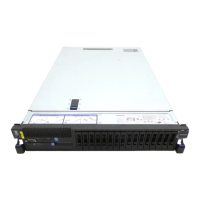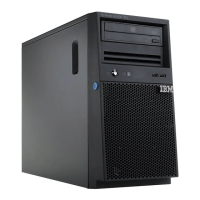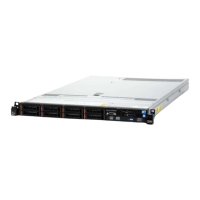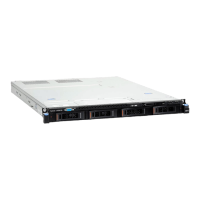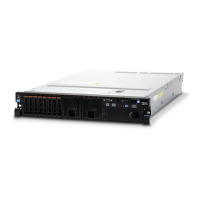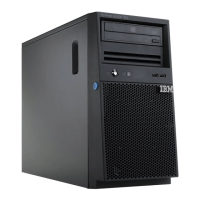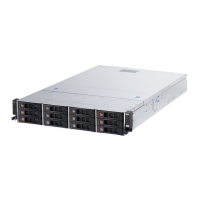Table 7. DIMM connectors on each memory channel for the microprocessors on the system
board and the optional microprocessor and memory expansion tray
Memory channel
DIMM
connectors
associated with
CPU 1 on the
system board
DIMM
connectors
associated with
CPU 2 on the
system board
DIMM
connectors
associated with
CPU 3 on the
microprocessor
and memory
expansion tray
DIMM
connectors
associated with
CPU 4 on the
microprocessor
and memory
expansion tray
Channel 0 7, 8, 9 19, 20, 21 31, 32, 33 43, 44, 45
Channel 1 10, 11, 12 22, 23, 24 34, 35, 36 46, 47, 48
Channel 2 4, 5, 6 16, 17, 18 28, 29, 30 40, 41, 42
Channel 3 1, 2, 3 13, 14, 15 25, 26, 27 37, 38, 39
v The following table shows the DIMM connectors on the system board and the
microprocessor and memory expansion tray that are associated with each
microprocessor.
Table 8. DIMM connectors associated with each microprocessor
Microprocessor Location
DIMM connectors
associated with the
microprocessor
Microprocessor 1 System board 1 through 12
Microprocessor 2 System board 13 through 24
Microprocessor 3 Microprocessor and memory
expansion tray
25 through 36
Microprocessor 4 Microprocessor and memory
expansion tray
37 through 48
v When you replace a DIMM, the server provides automatic DIMM enablement
capability without requiring you to use the Setup utility to enable the new
DIMM manually.
v The maximum operating speed of the server is determined by the slowest
DIMM in the server.
v DIMMs do not have to be installed in pairs, except in memory-mirroring mode.
v A minimum of one DIMM must be installed for each microprocessor. For
example, you must install a minimum of two DIMMs if the server has two
microprocessors (one for each microprocessor). If you install four
microprocessors in the server, you must install a minimum of four DIMMs (one
DIMM for each microprocessor). For more information about the DIMM
population sequence, see Table 9 on page 46, Table 10 on page 47, and Table 11
on page 48.
Note:
– When one DIMM per microprocessor is installed, system performance can be
slow.
– To run VMware, one DIMM per microprocessor must be installed. If a DIMM
is not installed for each microprocessor, the server will not be able to boot
VMware.
– For best performance, install DIMMs evenly across all four memory channels
for each microprocessor.
Chapter 2. Installing optional devices 45

